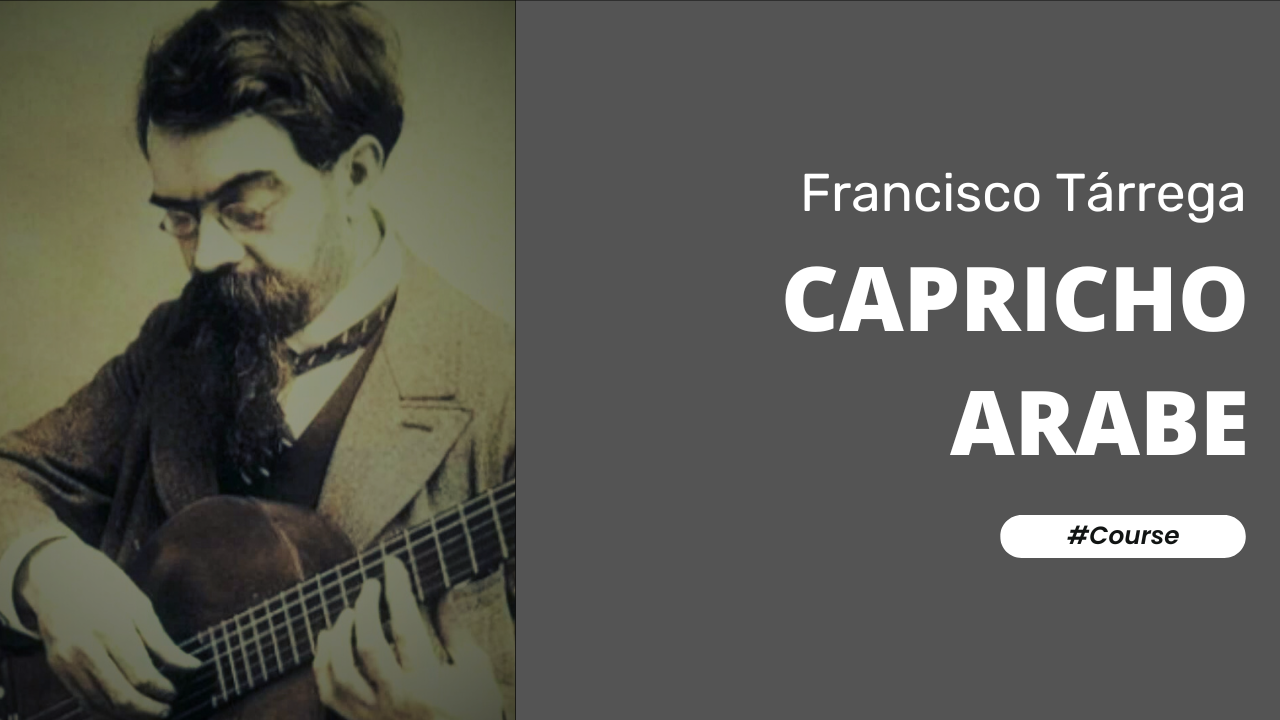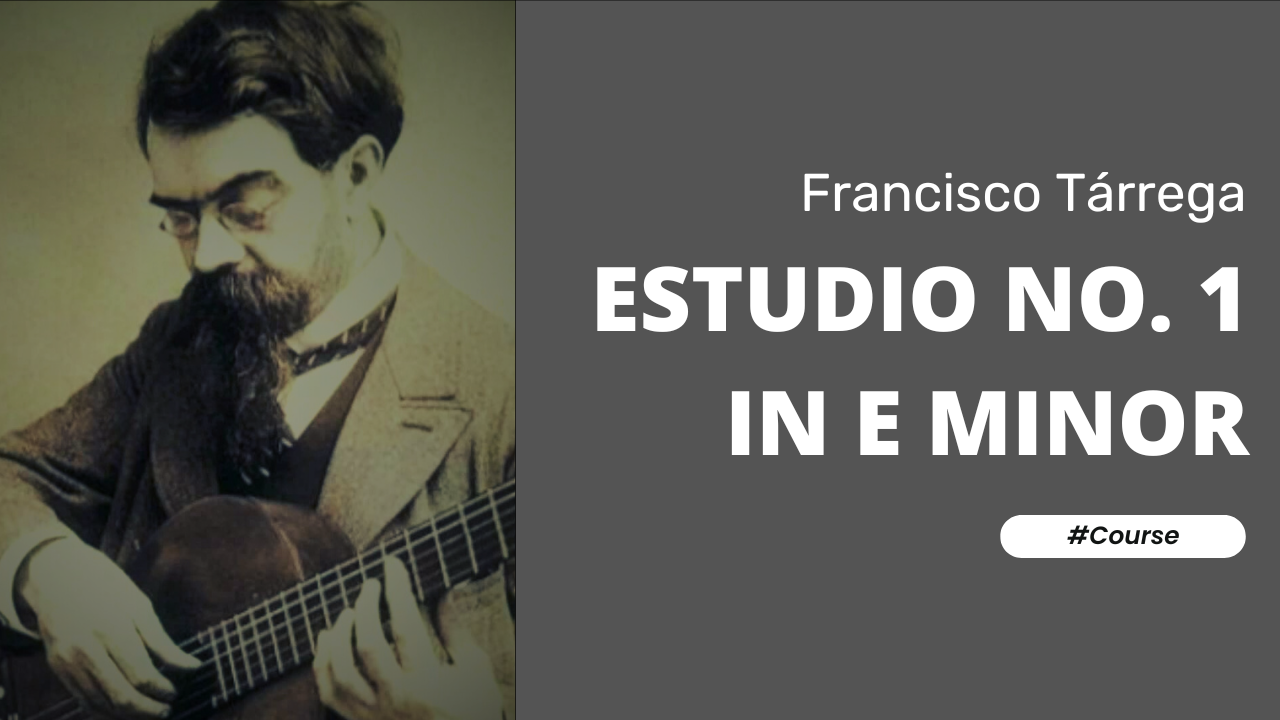Lagrima by Francisco Tárrega
Introduction
“Lágrima” by Francisco Tárrega is a poignant and beautifully crafted miniature for classical guitar that has become a beloved piece among guitarists and audiences alike. Francisco Tárrega, often referred to as the father of modern classical guitar, composed this piece in the late 19th century. This was one of the first ‘complicated’ classical guitar piece that I ever learned. It is also the piece that helped me learn the importance of vibrato and crescendo in music!
“Lágrima,” which translates to “teardrop” in Spanish, is a reflection of Tárrega’s ability to convey profound emotions through simple yet elegant music. The piece is structured in a ternary (ABA) form, starting with a melancholic and introspective melody in the minor key, which then transitions into a contrasting major section that brings a brief sense of hope and lightness before returning to the initial theme.
Performing “Lágrima” on classical guitar requires both technical skill and expressive sensitivity. The guitarist must navigate the delicate phrasing and subtle dynamic shifts to fully capture the piece’s emotional depth. Heavy use of vibrato and dynamics really help to bring this piece alive.
“Lágrima” stands as a testament to Tárrega’s genius in creating music that is both technically accessible and emotionally profound. Its enduring popularity is a tribute to its timeless beauty and the expressive potential of the classical guitar. This piece offers guitarists a chance to explore the instrument’s lyrical capabilities and connect deeply with Tárrega’s emotive musical language.
Musical Style
Francisco Tárrega’s musical style is distinguished by its blend of Romantic expressiveness and Spanish folk influences. His compositions are known for their lyrical melodies, rich harmonies, and intricate fingerstyle techniques, showcasing both technical virtuosity and emotional depth. Tárrega’s music often features arpeggios, tremolos, and dynamic contrasts, which highlight the guitar’s capabilities as a solo instrument. His works reflect a deep understanding of the guitar’s expressive potential, making them essential studies for both technique and musicality. Tárrega’s influence on the classical guitar repertoire is profound, having established foundational techniques and expanded the instrument’s possibilities.
Notable Pieces
Five notable pieces by Francisco Tárrega:
• Recuerdos de la Alhambra
• Capricho Árabe
• Lágrima
• Adelita
• Gran Vals
Let your fingers fly!
JoshCourse Instructor
Lagrima Course
About this Course
Introduction
“Lágrima” by Francisco Tárrega is a poignant and beautifully crafted miniature for classical guitar that has become a beloved piece among guitarists and audiences alike. Francisco Tárrega, often referred to as the father of modern classical guitar, composed this piece in the late 19th century. This was one of the first ‘complicated’ classical guitar piece that I ever learned. It is also the piece that helped me learn the importance of vibrato and crescendo in music!
“Lágrima,” which translates to “teardrop” in Spanish, is a reflection of Tárrega’s ability to convey profound emotions through simple yet elegant music. The piece is structured in a ternary (ABA) form, starting with a melancholic and introspective melody in the minor key, which then transitions into a contrasting major section that brings a brief sense of hope and lightness before returning to the initial theme.
Performing “Lágrima” on classical guitar requires both technical skill and expressive sensitivity. The guitarist must navigate the delicate phrasing and subtle dynamic shifts to fully capture the piece’s emotional depth. Heavy use of vibrato and dynamics really help to bring this piece alive.
“Lágrima” stands as a testament to Tárrega’s genius in creating music that is both technically accessible and emotionally profound. Its enduring popularity is a tribute to its timeless beauty and the expressive potential of the classical guitar. This piece offers guitarists a chance to explore the instrument’s lyrical capabilities and connect deeply with Tárrega’s emotive musical language.
Musical Style
Francisco Tárrega’s musical style is distinguished by its blend of Romantic expressiveness and Spanish folk influences. His compositions are known for their lyrical melodies, rich harmonies, and intricate fingerstyle techniques, showcasing both technical virtuosity and emotional depth. Tárrega’s music often features arpeggios, tremolos, and dynamic contrasts, which highlight the guitar’s capabilities as a solo instrument. His works reflect a deep understanding of the guitar’s expressive potential, making them essential studies for both technique and musicality. Tárrega’s influence on the classical guitar repertoire is profound, having established foundational techniques and expanded the instrument’s possibilities.
Notable Pieces
Five notable pieces by Francisco Tárrega:
• Recuerdos de la Alhambra
• Capricho Árabe
• Lágrima
• Adelita
• Gran Vals
Let your fingers fly!
Josh


